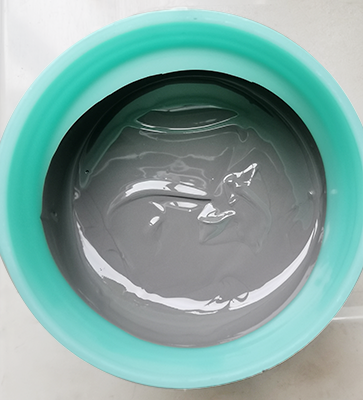Physical Properties and Reliability of Various Alloy Components of Solder Paste_Shenzhen Fitech

Physical Properties and Reliability of Various Alloy Components of Solder Paste
Solder paste is an indispensable material in the SMT soldering process, which is mainly composed of tin and other metal elements. The alloy composition of solder paste determines its physical properties, such as melting point, wettability, creep, etc., which in turn affects its soldering performance and reliability. This article will introduce the physical properties and reliability of several common solder paste alloy compositions and analyze their advantages and disadvantages in different applications.
Tin-bismuth alloy is the industry's low-temperature solder paste mainstream alloy composition, its melting point varies with the bismuth content, generally between 138 ~ 183 ℃; its main use in temperature-resistant limited material assembly products, such as LED, flexible circuit boards, organic electronic devices and other temperature-sensitive products. Tin-bismuth alloy solder paste is more brittle, resistance to mechanical vibration, cold and thermal shock and other aspects of poor performance, the industry class2 and above products are not used. This is because tin-bismuth alloy in the solid-liquid phase change will occur when the volume contraction, resulting in stress concentration inside the solder joint, thus reducing the strength and toughness of the solder joint. By adding micro-alloying elements such as Ag on the tin-bismuth alloy, do diffusion strengthening, solid solution strengthening and eutectic strengthening, can improve the brittleness problem to a certain extent, but its comprehensive mechanical properties are still not as good as SAC305 alloy.
Table 1: IPC classification of electronic products

Currently, SAC305 is the mainstream alloy component of solder paste with a melting point of 217°C. It has good wettability and thermal fatigue strength and solder joint reliability, and is the alloy of choice for lead-free soldering.The drawbacks of the SAC305 alloy are the high price of silver, which increases soldering costs, and the high coefficient of thermal expansion of SAC305, which may lead to thermal cycling fatigue and cracking of the solder joint. As a result, some researchers have proposed methods to reduce the silver content or to substitute silver in order to reduce cost and improve reliability. For example, alloy SAC0307 is a low silver content (0.3%wt) tin-silver-copper alloy with a melting point of 217~226°C. Wettability and thermal fatigue resistance are slightly lower than that of SAC305, but creep resistance is better and cost is lower.
Tin-copper alloys without silver are mainly used in the production of wave soldering rods and wires, as well as the production of lead-free tin spray boards. The melting point of tin-copper alloys varies with the copper content, generally between 217~227℃, the higher the copper content, the higher the melting point. Tin-copper alloys have poorer wettability and lower heat fatigue resistance, but lower cost and better creep. The wettability and heat fatigue resistance of tin-copper alloys can be improved by adding other elements such as antimony, bismuth, nickel, zinc, etc., as well as by adjusting the soldering process and using highly active fluxes. For example, SnCu0.7Ni0.05 alloy is a tin-copper alloy with 0.05% nickel added, and its melting point is 217~226°C. Wettability and heat fatigue resistance are significantly improved, and the brightness of the solder joints is also improved.
Antimony-containing alloys are used in the manufacture of alloy materials in batteries, slide bearings and other fields, as well as high-temperature, high-pressure, high-frequency and other special environments such as welding. Antimony can increase the mechanical strength and resistance of the solder, but it also increases the hardness and brittleness of the solder.

Leaded alloys, as the traditional solder, have good wettability, heat fatigue resistance and solder joint reliability, and the common alloy is Sn63Pb37. Leaded alloys are widely used in Class3 products and special low-end markets, such as IC packaging, aerospace, and military industries. The disadvantage of lead-containing alloy solder is that lead is more toxic and harmful to human beings and the environment, so it is restricted or banned in the EU and other countries and regions.
In summary, the physical properties and reliability of the various alloy components of solder paste have significant differences, which need to be selected and optimized according to different applications and product requirements in order to achieve the best soldering results.

















 Back to list
Back to list



